Researchers have discovered “convincing proof” indicating the presence of an ocean just below the surface of Saturn’s Death Star satellite. “Hitech” provides an explanation of how this revelation will impact the quest for extraterrestrial life within our solar system, as well as other unexpected phenomena that have astounded scientists studying this moon.
Discover “Hitech” on
On September 17, 1789, using a 12-meter reflector telescope, the English astronomer William Herschel made a groundbreaking discovery – one of Saturn’s moons, Mimas. For many years, scientists could only observe this celestial object as a small glowing dot, lacking any significant details.
However, a turning point came in 1980 when Voyager 1 and Voyager 2 captured the first-ever images of Mimas, providing a closer look at this enigmatic moon. Subsequently, the Cassini mission conducted multiple flybys of Mimas, offering even more detailed imagery. Recently, scientists have scrutinized the data from the Cassini mission and determined that Mimas likely harbors a subsurface ocean of liquid water, concealed at great depths.
What is the information available about Mimas?
Mimas, one of Saturn’s moons, is characterized by its small size. With an average radius of just under 198 km, this celestial body is covered in craters. Due to its limited size, Mimas does not possess a perfectly spherical shape; instead, it resembles an ellipsoid with dimensions of 207×197×191 km. Analysis of the available data indicates that Mimas is a low-density object. Scientists hypothesize that it is primarily composed of water ice, which is the only substance detected on this moon so far.
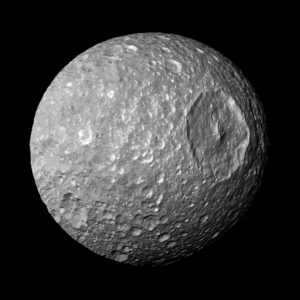
Located at an average distance of slightly above 186,000 km from Saturn, the satellite completes a full orbit in just 22 hours and 36 minutes. Surprisingly, Mimas always presents the same face to Saturn, similar to how the Moon always faces Earth.
A majority of Mimas’ surface is covered with impact craters that are over 40 kilometers in diameter. However, at the South Pole, these craters are only half the size, measuring approximately 20 km. This indicates that certain processes, such as melting, occurred at a much later time in that region compared to the rest of the moon.
The Death Star
Mimas earned the nickname “The Death Star” due to its striking similarity to the iconic battle space station from the Star Wars universe. The moon’s most prominent feature is the massive Herschel impact crater, named after its discoverer. This crater is truly impressive in size, measuring over 130 km in diameter, which is about one-third of the moon’s own diameter.
What sets the Herschel crater apart is not just its size, but also its towering outer walls, reaching a height of approximately 5 km. The impact that formed this crater was so powerful that it had the potential to completely shatter the moon, had it been slightly stronger.
Despite being closer to Saturn than Enceladus, another intriguing fact about Saturn’s moon is that it appears to be frozen. Additionally, it has a much more elongated orbit than Saturn’s other moon. These unique characteristics suggest that Mimas experiences significantly stronger tidal heating compared to its neighboring moon. However, Enceladus exhibits geysers of water, indicating internal processes that warm the water. In contrast, Mimas is known for its frozen surface.
Due to this paradox, the “Mimas Test” was developed as a benchmark for any theory attempting to explain the partially melted water on Enceladus. Such a theory must also account for the completely frozen water on Mimas. In a recent study, scientists have made progress in unraveling the mysteries surrounding Mimas, Saturn’s most peculiar satellite.
An undiscovered sea of water
Research conducted in 2014-2015 by NASA’s Cassini spacecraft has long suggested to scientists that Mimas might possess a subterranean reservoir of water. However, direct verification of this hypothesis has remained elusive. Now, a team of American scientists has completed a study that indicates the possibility of Mimas concealing an imperceptible ocean of liquid water, raising the intriguing prospect of potentially harboring primitive lifeforms. To date, no evidence of water penetrating the icy surface has been found, and the existence of the ocean is currently deduced solely through numerical models.
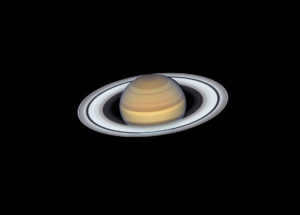
In their research, the scientists utilized information concerning the tidal warming phenomenon, which is triggered by the gravitational force of Saturn. The scientists took into consideration the slight elongation of Mimas’ orbit and the moon’s own wobbling. The examination indicated that this process would lead to the melting of the ice inside this celestial body.
The researchers discovered that the depth of the ocean is between 24 and 31 kilometers. This figure varies depending on the liquidity and plasticity of the ice, as well as the temperature at its surface and the distribution of heat flow. It is worth noting that this depth is sufficient to prevent the possibility of water geysers forming on the moon’s surface, as is the case with other satellites that have hypothetical underwater oceans, like Enceladus.
What is the main point?
The Cassini mission has revolutionized our understanding of potential locations for extraterrestrial life. Along with Mars, moons orbiting the gas giants like Enceladus, Europa, and Titan are now being considered as possible habitats for life. Confirming the presence of an ocean on Mimas would completely reshape our knowledge of Saturn.
Learn more
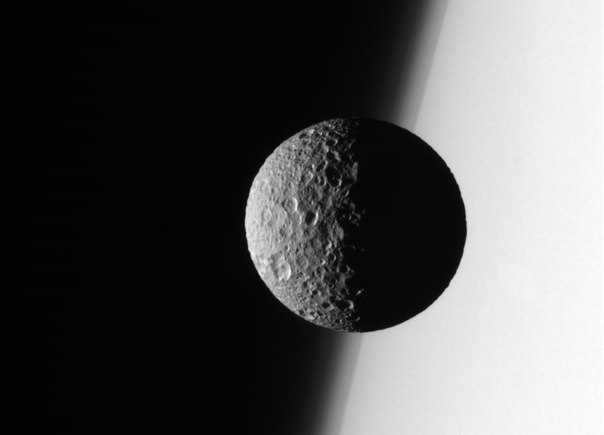

Mimas, a celestial body orbiting Saturn, is renowned for its colossal crater and its near-circular path around the planet. This makes it a captivating entity within the solar system.
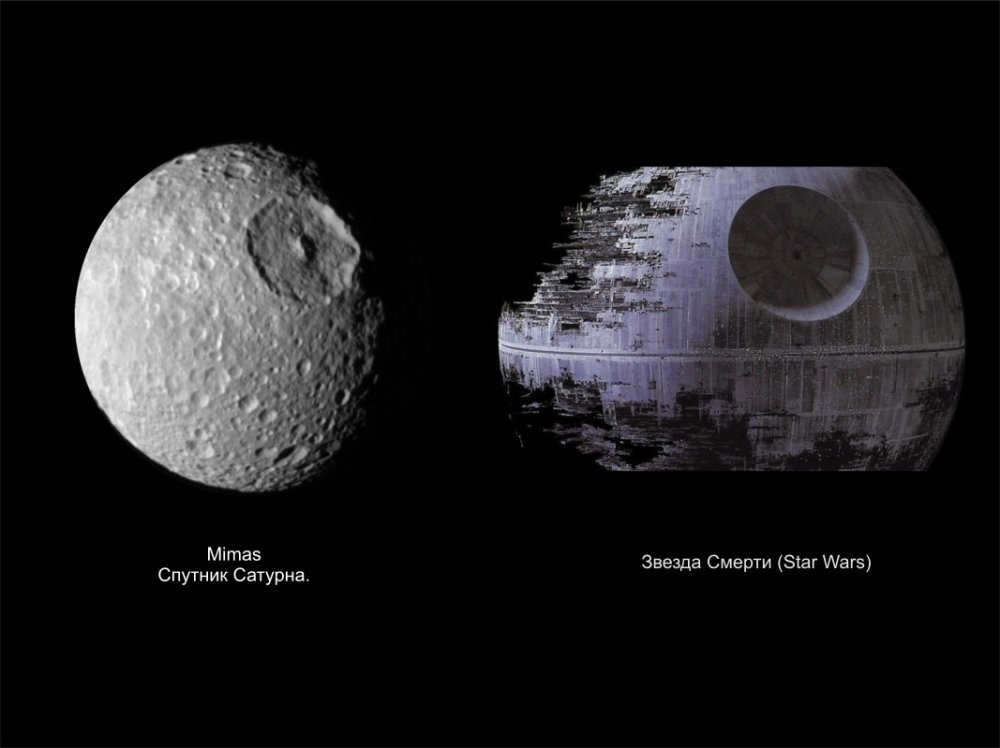
Comparison between the satellite and the Death Star
Mimas, a moon of Saturn, has gained fame beyond the realm of astronomy thanks to its appearance in the movie “Star Wars”. This celestial object bears a striking resemblance to the Death Star, a fictional space station from the aforementioned film franchise. Interestingly, it was only after the movie’s release that detailed studies and photographs of Mimas were obtained. Therefore, the similarities between the Death Star and Mimas in the movie are likely coincidental. This perspective is also shared by the creators of “Star Wars”.
For those unfamiliar with “Star Wars” and unaware of the resemblance between Saturn’s moon and the aforementioned fictional star, a glance at one of Mimas’ photographs will suffice. Nearly all images showcase a massive crater spanning 130 kilometers in diameter. Considering Mimas itself measures less than 400 kilometers in diameter, the crater’s size relative to the moon is astonishingly large.
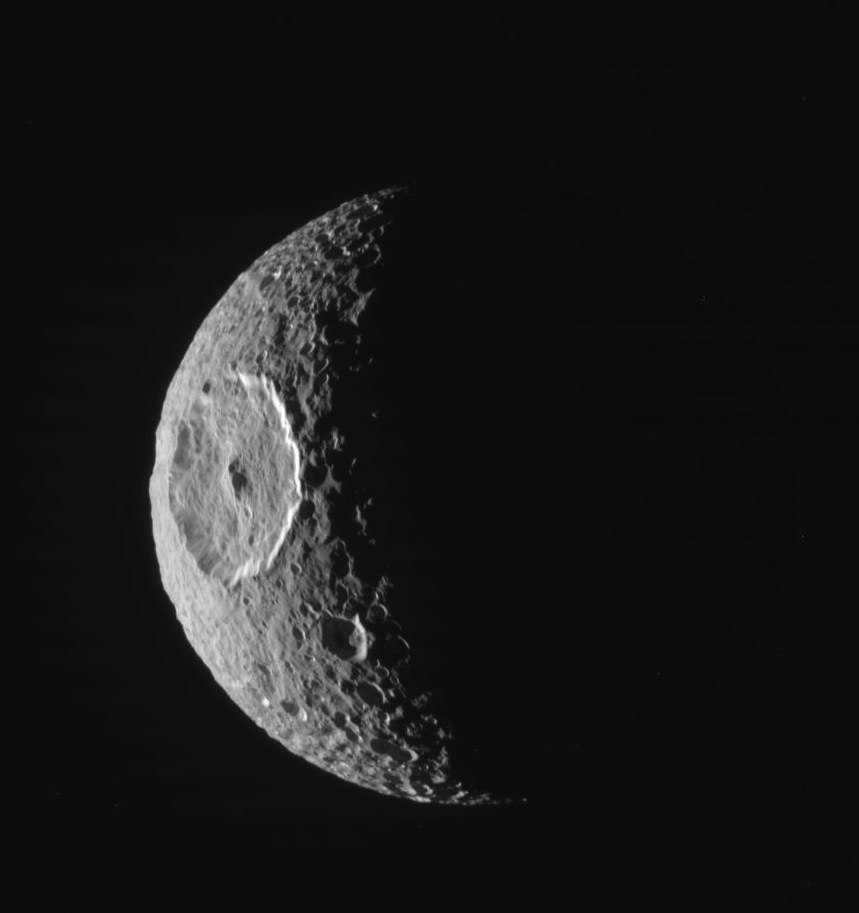
The crater on Mimas known as Herschel impact crater
The crater on Mimas, which was discovered by William Herschel in 1789, is named after him. It has also been referred to as the “Bull’s Eye” or the “Great Eye”, among other names. However, the most commonly used name in amateur astronomy is the Herschel impact crater, which highlights its significance as a historical formation and acknowledges its discoverer. The name of the satellite itself, Mimas, is derived from the Greek titan Mimanta. This name was given to the satellite by William Herschel’s son, who, like his father, was involved in the study of celestial bodies.
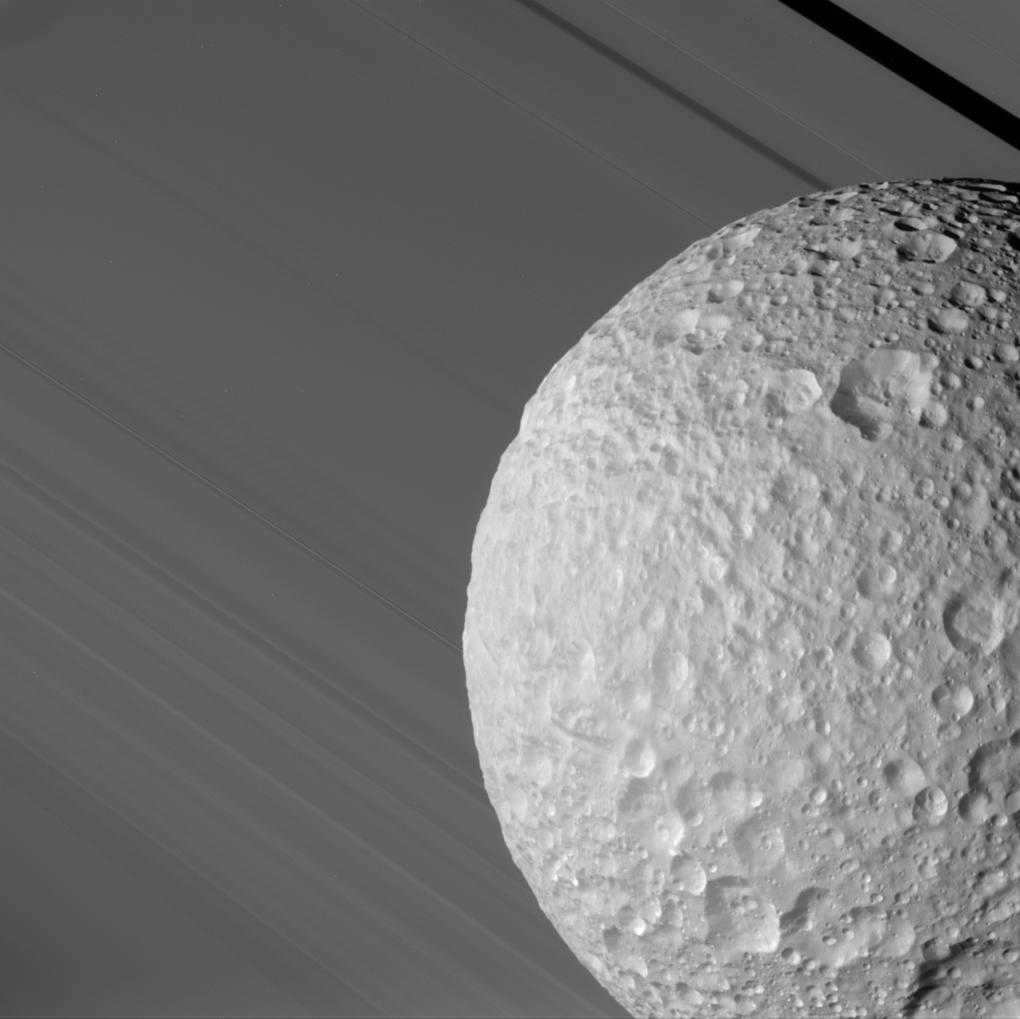
Mimas transits across Saturn’s rings
Astronomers worldwide find Mimas intriguing not only because of the massive crater that dominates its surface but also because of its nearly perfect circular orbit. The eccentricity of its orbit is minimal, measuring only 0.0202. Likewise, the tilt of Mimas’ orbit in relation to Saturn’s equator is also relatively small, at 1.566 degrees. Mimas orbits at a distance of just 200,000 kilometers from Saturn, roughly half the distance between Earth and our own moon. It completes one orbit around Saturn in less than 23 hours.
By conducting a density analysis, scientists have determined that Mimas, one of Saturn’s satellites, is composed predominantly of ice, with intermittent fragments of rock. If it were not for the gravitational pull exerted by Saturn, this celestial body would possess an almost flawless spherical form, but instead, one of its axes is 10% longer than the other.
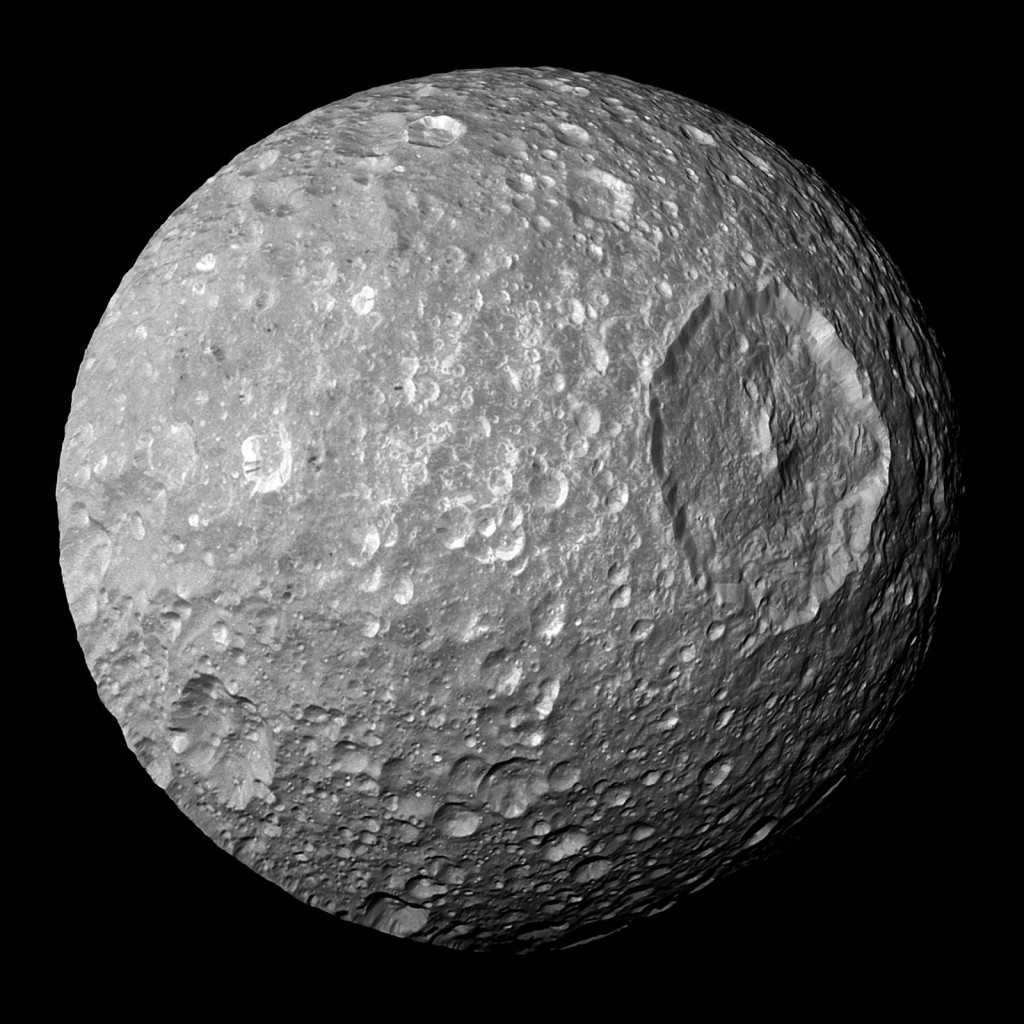
The image above is a capture of Mimas taken by the Cassini probe.
Mimas is covered with numerous craters of different sizes, which were formed due to meteorite impacts. Scientists have already identified around 40 medium-sized craters on the moon, each of them having their own designated names. Some of the most well-known craters include Herschel Impact Crater, Lucas, Marhaus, Melodas, Nero, and others. The average diameter of these craters is approximately 30 kilometers.
Topic-based materials
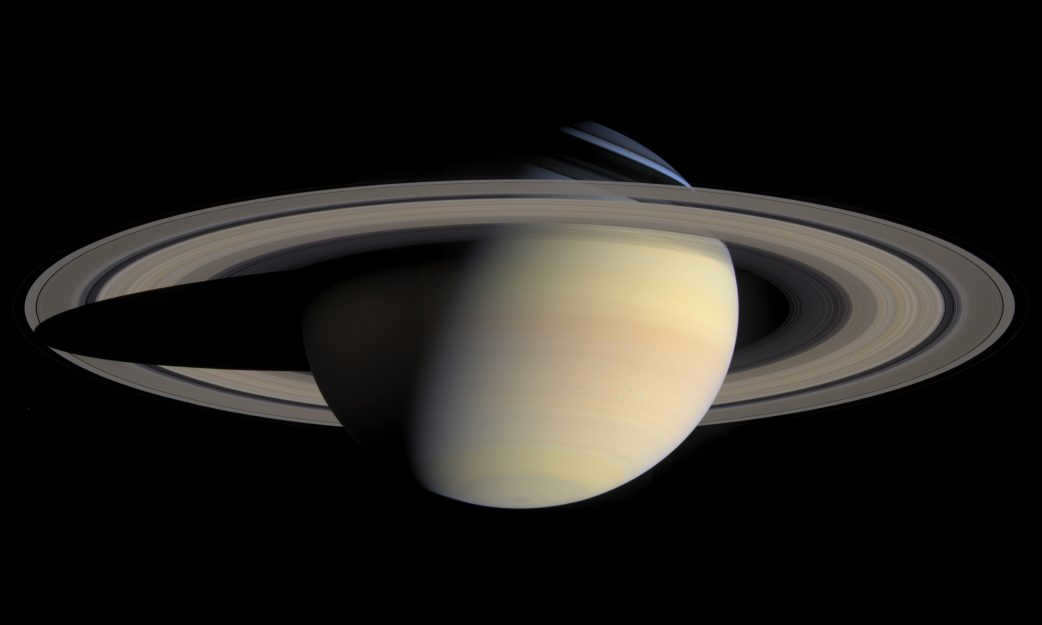
Despite being discovered in 1789, Mimas, a moon of Saturn, was not thoroughly examined until the last century when the Voyager spacecraft provided the first images of this celestial body. It was thanks to Voyager that the dimensions of the Herschel crater, as well as the fissures on the opposite side of the moon, were extensively studied. These cracks are believed to have formed due to a collision between Mimas and an asteroid.
The Cassini spacecraft was the second probe to study Mimas, one of Saturn’s moons. In 2010, it transmitted high-resolution images of the moon back to Earth. Using its advanced instruments, Cassini also detected subtle changes in temperature on Mimas’ surface. These findings provided scientists with valuable insights, including the surprising revelation that the Cassini gap, which separates Saturn’s rings, was actually formed due to the gravitational influence of Mimas.
- In 1980, Voyager transmitted images to Earth that bore a striking resemblance to the iconic character Pac-Man from the popular computer game.
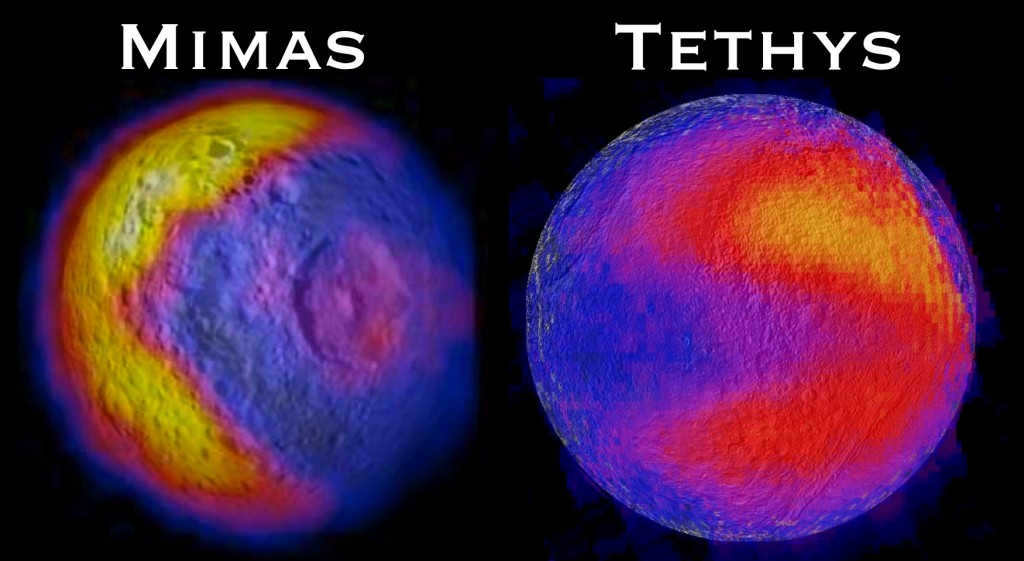
Heat maps showcasing the unique characteristics of Mimas and Thetis.
Every year on May 4th, devoted fans of George Lucas’ legendary saga commemorate Star Wars Day. This particular date was chosen due to the well-known quote “May the Force be with you,” which enthusiasts cleverly twist into “May the fourth be with you.” In honor of this special Star Wars day, the editorial team at The Universe Space Tech would like to share a handful of fascinating details about Mimas, an extraordinary moon of Saturn that is often likened to the Death Star due to its striking resemblance.
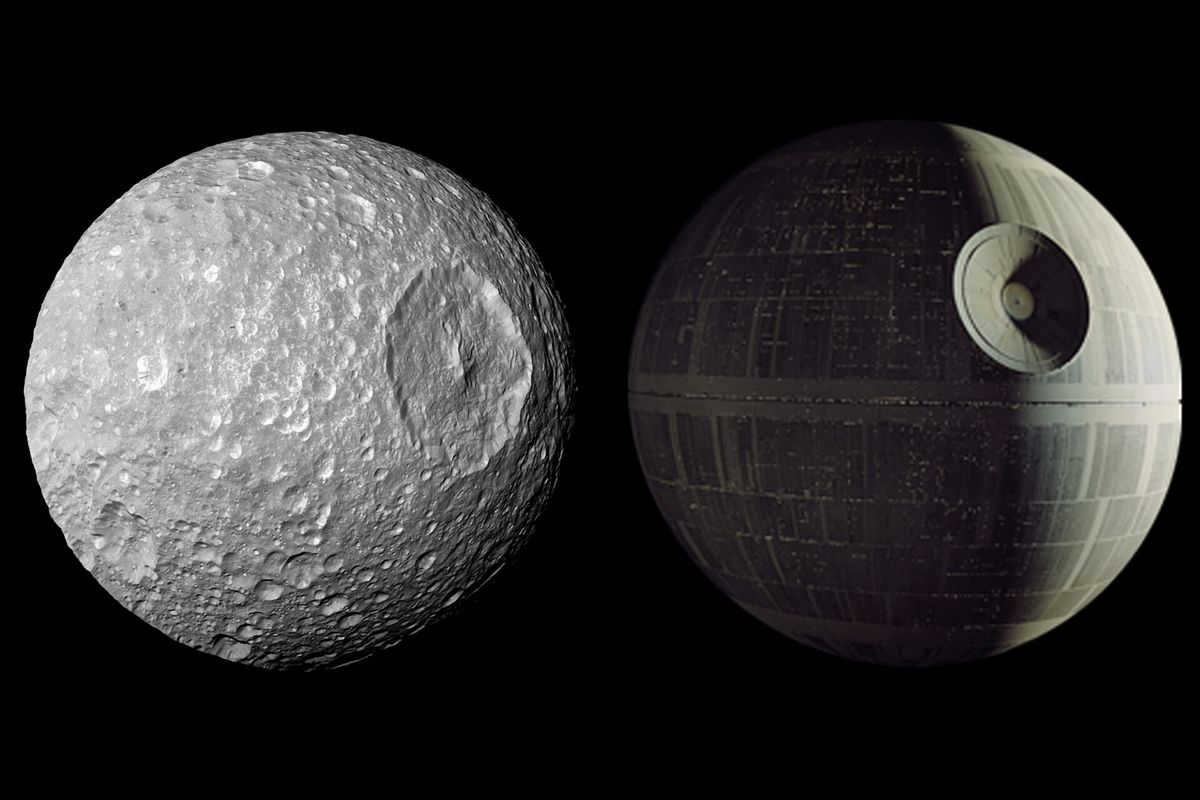
The seventh moon of Saturn
Mimas was first observed by astronomer William Herschel on September 17, 1789. It was the seventh moon of Saturn to be discovered.
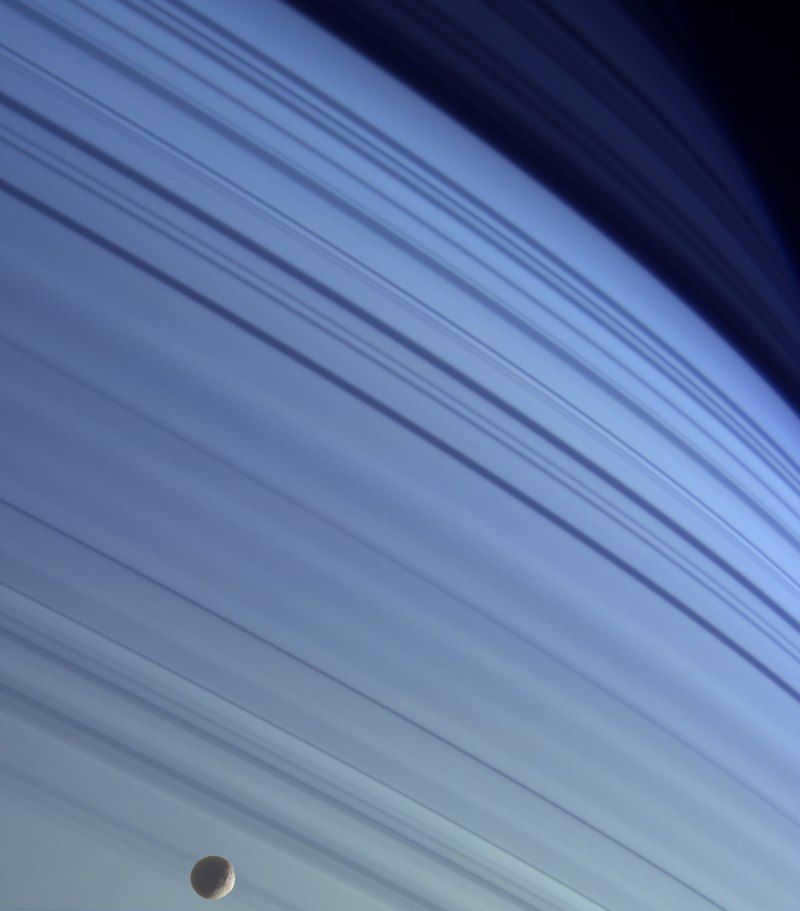
In the following two hundred years, Mimas stayed as a tiny speck in the eyepieces of telescopes. However, everything transformed in the early 1980s when a duo of Voyager probes explored the Saturn system. They captured images of Mimas that captivated the interest of even those with minimal fascination in astronomy. Astonishingly, it was revealed that Mimas bears a striking resemblance to the Death Star from the renowned film “Star Wars”.
Victim of a monumental crash
The resemblance of Mimas to the Death Star is due to the presence of a massive impact crater, measuring 139 kilometers in diameter, which has been named after William Herschel. This crater accounts for over a third of the moon’s own diameter, which measures 396 kilometers. It is worth noting that a crater of this size on Earth would measure over 4000 km in diameter, making it larger than the entire continent of Australia.
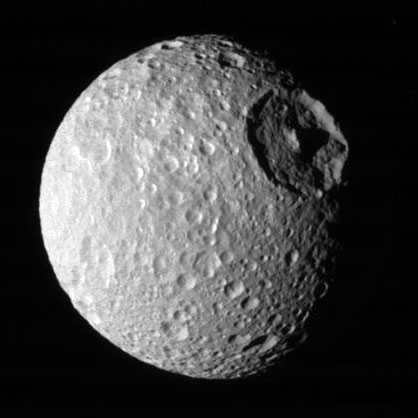
According to astronomers, Mimas was most likely almost split in half by the impact that created the Herschel crater. On the other side of the moon, there are visible cracks which are believed to have been caused by the shockwaves from the impact.
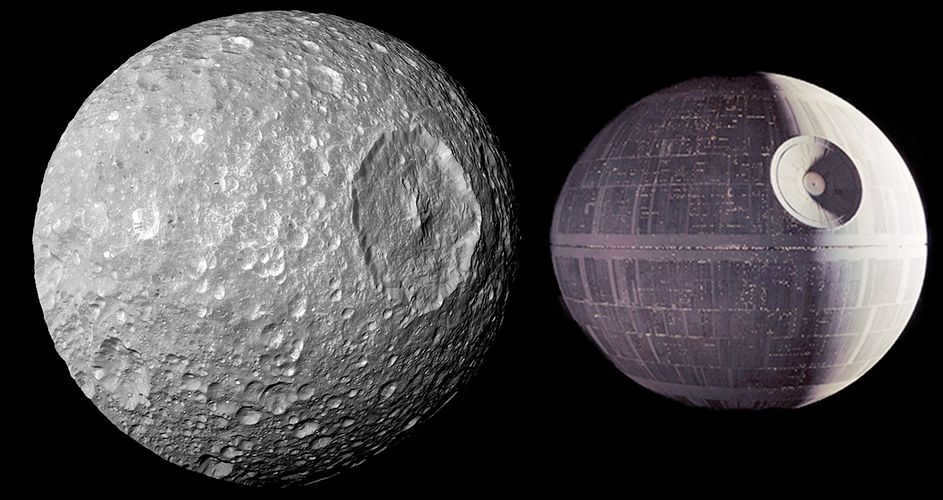
By the way, Mimas is bigger than the first but smaller than the second Death Star in the “Star Wars” universe. According to the “Star Wars” canon, their diameters were 120 and 800 kilometers, respectively.
The smallest celestial body in the solar system
Another interesting fact about Mimas is that it is the smallest known celestial object in the solar system to have achieved a spherical shape due to its own gravity. The surface area of the moon is only 500,000 square kilometers, which is similar to the size of Spain. Mimas is ranked twentieth among the largest planetary satellites in the solar system.
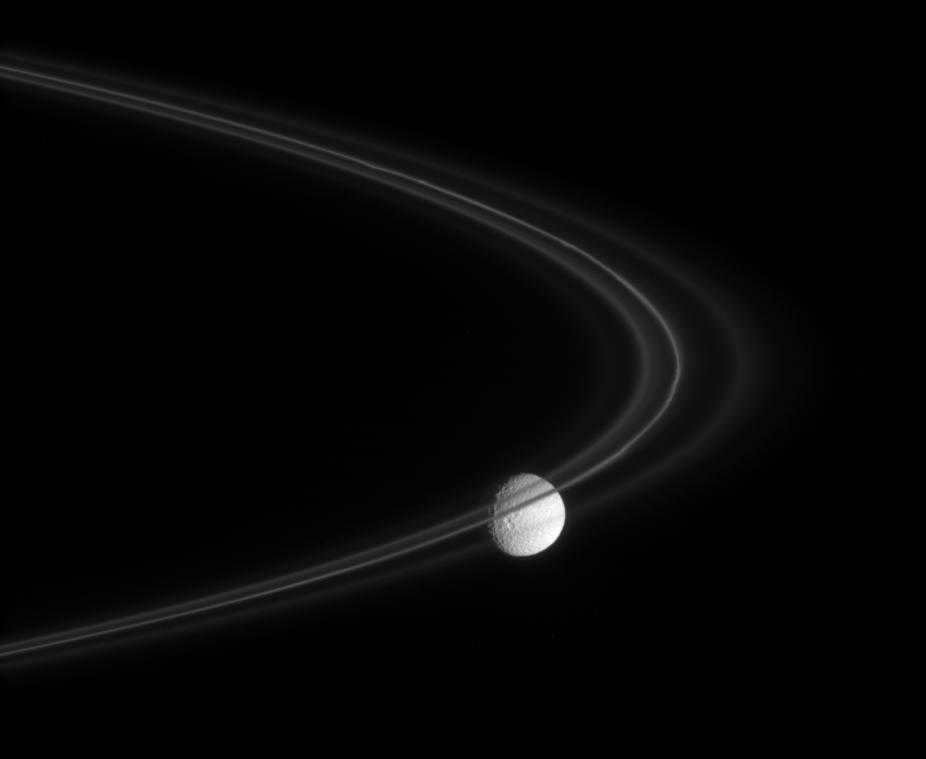
The Pacman-like Shape of Mimas: NASA’s Surprising Discovery
In 2010, NASA unveiled a surprising temperature map of Mimas, captured by the Cassini spacecraft. The findings astonished scientists, revealing that the hottest region of Mimas is not positioned along its equator, but rather scattered around its edges. This peculiar distribution, resembling an open mouth, quickly led to a new comparison – Mimas being likened to Pacman, the iconic character from the popular 1980s video game. Moreover, the presence of the Herschel crater in the center of this “mouth,” resembling an edible dot from the game, only served to reinforce this striking resemblance.
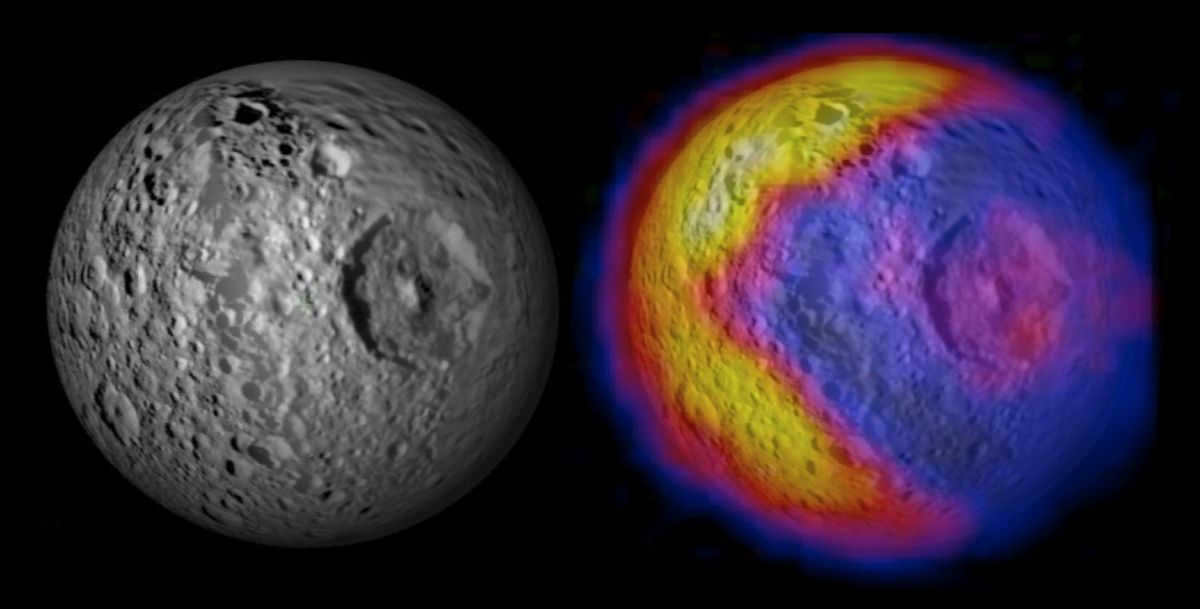
Mimas’ mysterious ocean
Mimas is not only fascinating for its unique appearance, but also for its recent discovery of an enigmatic “rocking” satellite. A group of astronomers from the United States have unveiled a computer model that suggests this peculiar behavior can be attributed to the presence of a concealed layer of liquid water deep within Mimas. This intriguing body of water is believed to exist approximately 22-32 kilometers beneath the moon’s surface, and it remains unfrozen due to the tidal heating caused by the gravitational pull of Saturn.
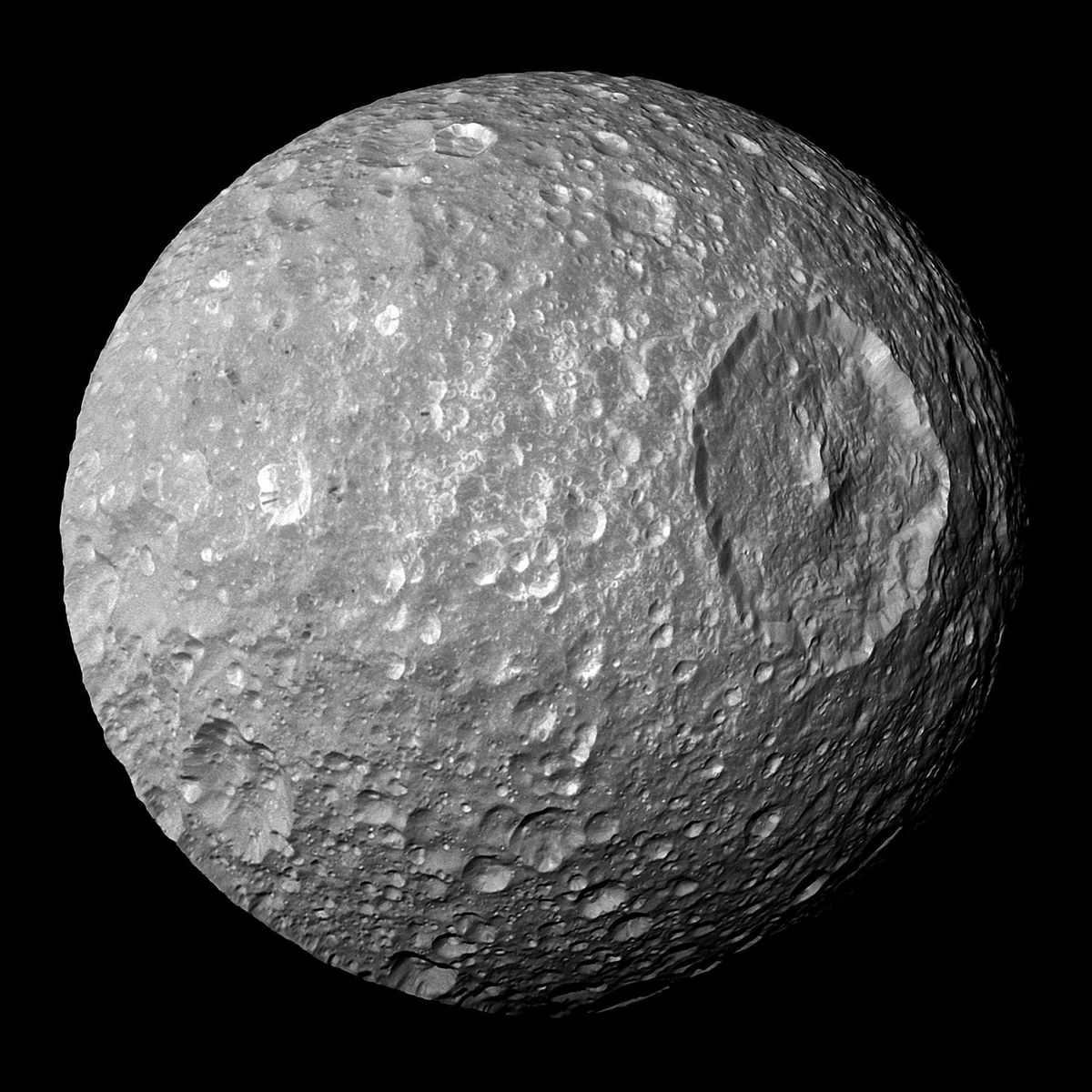
If the findings of scientists are verified, Mimas could be considered as the pioneer of an entirely new category of oceanic planets, concealing any evidence of life beneath their surfaces from external observers. While Mimas may bear a striking resemblance to the Death Star, it is plausible that within its depths lies the potential for genuine lifeforms.
Stay up-to-date with the latest news and fascinating facts on our Telegram channel!
Join us at: https://t.me/ustmagazine

As a news editor and article author, my interest in space and astronomy began in childhood and has developed into a professional passion. In my work at The Universe. Space. Tech, I write news, fact-check information, and create various analytical materials.
Thanks to space exploration, we have discovered that Saturn has a fascinating system of 150 satellites, with 53 officially recognized. One satellite, Mimas, stands out with its unique appearance, which even frightens some people.
This enigmatic celestial object consists primarily of ice, and the markings on its surface provide valuable insights into the history of the entire system. There is also a possibility that Mimas houses a hidden liquid ocean beneath its surface.


Detection and identification
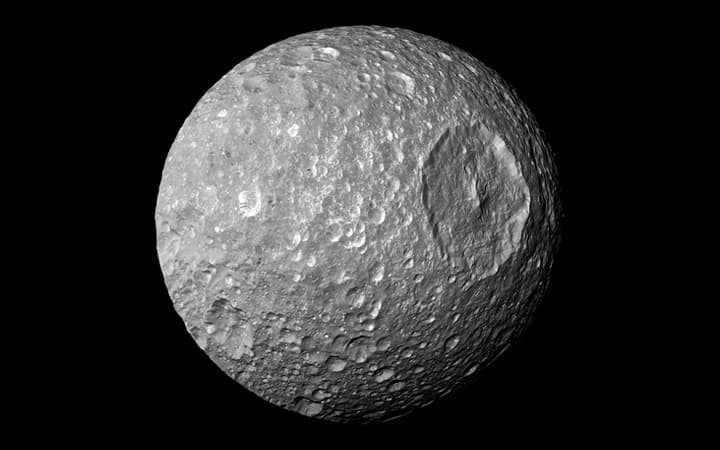
A perspective of Mimas as seen from the Cassini probe
In 1789, Mimas, one of Saturn’s moons, was discovered by William Herschel. This groundbreaking observation came a century after the larger moons were first identified by Christian Huygens and Giovanni Cassini. The name “Mimas” was proposed by John Herschel in 1847. According to Greek mythology, Mimas was one of the offspring of the titan Cronus and Gaia. Born from the blood of Uranus, Mimas fought alongside the other titans against the Olympians in their quest for universal supremacy.
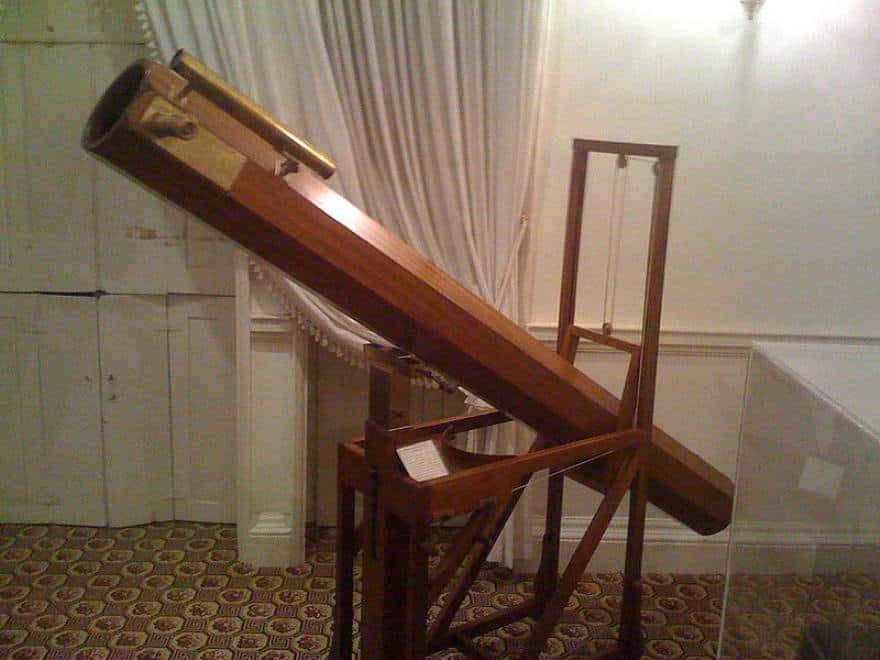
Here is the telescope that belongs to William Herschel, and it even has a personal inscription on it.
Information about the Size, mass, and orbit of Mimas
Mimas has a radius of 198.2 km, which is about 0.0311 times the radius of Earth. Its mass is 3.75 x 10^19 kg. On average, Mimas is located at a distance of 185,539 km from the planet it orbits. However, due to its eccentricity of 0.0196, Mimas can get as close as 181,902 km and as far as 189,176 km from its planet. You can see a photo of Mimas satellite here.


Comparing the size of the Moon to Saturn’s primary satellites
Mimas has an orbital velocity of 14.28 km/s and completes one orbit in 0.942 days. Its orbital period is synchronized with its axial period, causing it to always face one side of the planet due to gravitational forces. Mimas also has a 2:1 resonance with Tefia and a 2:3 resonance with Pandora.
A skilled tarot reader will provide answers to the following questions:
What does the future hold for you? How will your relationships flourish? What decisions should you make?

So, you have discovered the identity of the planet that Mimas orbits around.
The primary characteristics of Mimas, the satellite
Composition and Surface
The satellite Mimas has a density of 1.1479 g/cm3, suggesting that it is primarily made up of water ice with a small amount of silicate rock. The gravitational forces exerted by its parent planet cause Mimas to be elongated, with its longest axis being 10% longer than its shortest axis. Despite its small diameter of 396 km, Mimas is notable for achieving gravitational equilibrium, making it the smallest celestial body to do so.
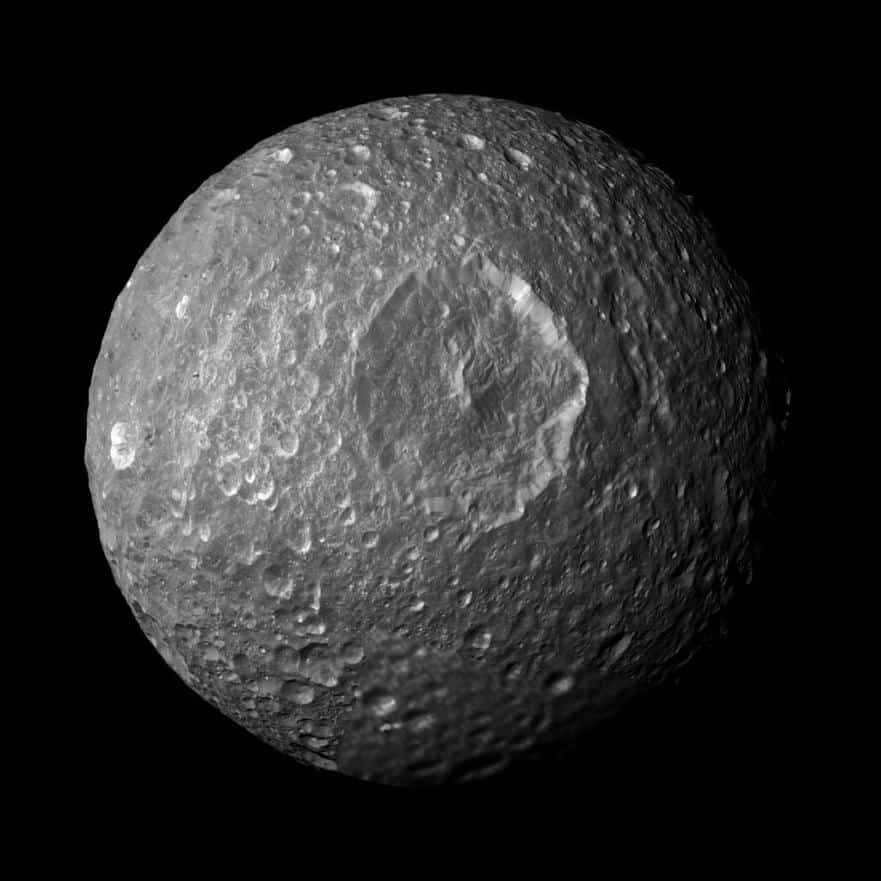

A photograph of Mimas taken by the Cassini spacecraft. The most prominent feature is the Herschel crater.
There are three different types of surface formations: craters, chasms, and crater chains. Craters are the most abundant and many of them are ancient.
The Herschel crater is particularly noteworthy. It is responsible for giving the moon its resemblance to the iconic Death Star from Star Wars. The crater spans 130 kilometers in diameter and has walls that are 5 km high and 10 km deep. The central peak reaches a height of 6 km. To put it in perspective, if we were to scale it to the size of our country, it would cover a diameter of 4000 km, which is wider than Australia.
Such a collision would have been powerful enough to obliterate the moon and cause fractures and protrusions on the opposite side.
The surface layer is abundantly marked with small craters measuring 40 km in diameter. However, no depressions larger than 20 km are observed in the southern region.
In 2014, Cassini provided indications of a hidden ocean. The irregularities in the moon’s orbit suggest that its interior lacks uniformity. The ocean might exist in a liquid form due to the gravitational pull exerted by Tefia and Pandora.
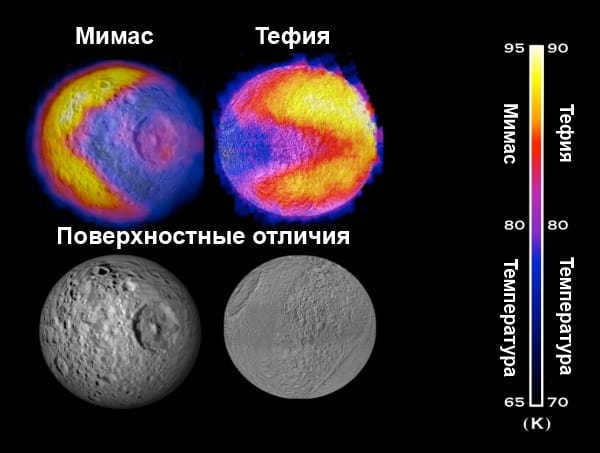
Temperature map displaying the temperatures of Mimas and Tefia.
Mimas resonances are also connected with the rings. Mimas creates a gap between the two widest rings A and B, which clears out material. The Huygens gap contains particles that are in a 2:1 resonance with Mimas, while the gap between C and B maintains a 3:1 ratio.
In 1979, the satellite was first approached by Pioneer 11 at a distance of 104263 km. Voyagers 1 (1980) and 2 (1981) followed suit, transmitting images and information about the atmosphere, rings, and satellites. They also captured the first-ever images of the Herschel crater.
Cassini captured multiple photos of Saturn’s satellite Mimas in 2004. The closest encounter occurred in 2010, when the spacecraft came within 9500 km. It calculated the satellite’s orbit and uncovered possible indications of an ocean.
A skilled tarot reader will provide answers to the following questions:
What does the future hold for you? How will your relationships turn out? What is the right decision to make?

The Saturn system is truly awe-inspiring, and we can only dream of the future missions that will explore its mysteries. Here we have a mesmerizing surface map of the enigmatic Mimas satellite, accompanied by a collection of breathtaking space photographs.
Discover the wonders
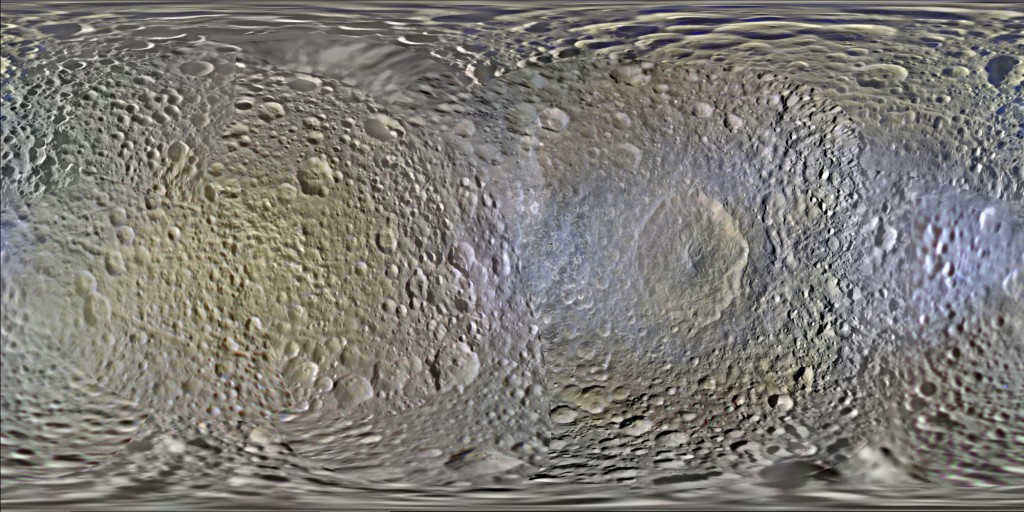
Feel free to click the image to get a better view
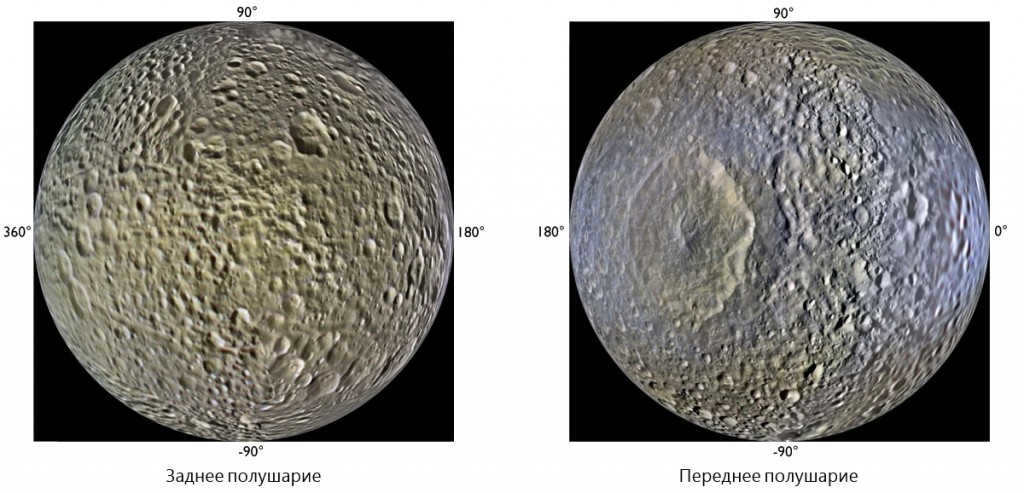
Gallery of Pictures
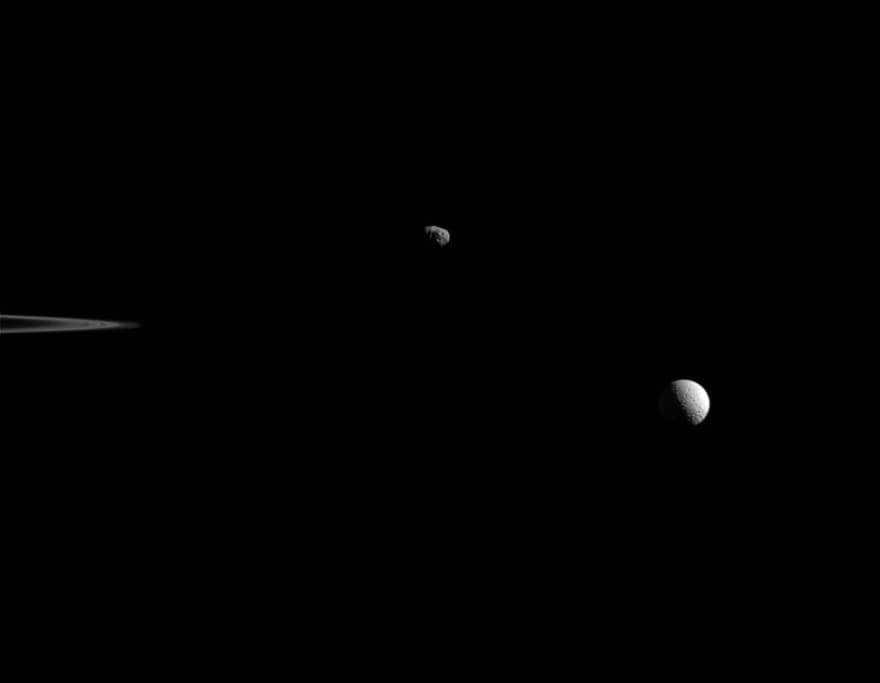
On October 27, 2015, the Cassini mission provided a view of Janus and Mimas rotating. The left side shows the outer edge of Saturn’s rings. Janus is located above the center, while Mimas is on the right side. Due to its irregular shape, Janus’ terminator, which separates day from night, appears jagged. In contrast, Mimas has a smooth terminator, indicating its spherical appearance. The image was captured using the green light of the instrument’s narrow-angle camera. Janus was at a distance of 963,000 km, with a scale of 5.8 km per pixel. Mimas, on the other hand, was 1.1 million km away, with a scale of 6.6 km per pixel. The Cassini program is a collaborative effort between ESA, NASA, and the Italian Space Agency, with the team based at the Jet Propulsion Laboratory. The two cameras on board were also built by this team, and the extracted photos are processed in Boulder, Colorado.
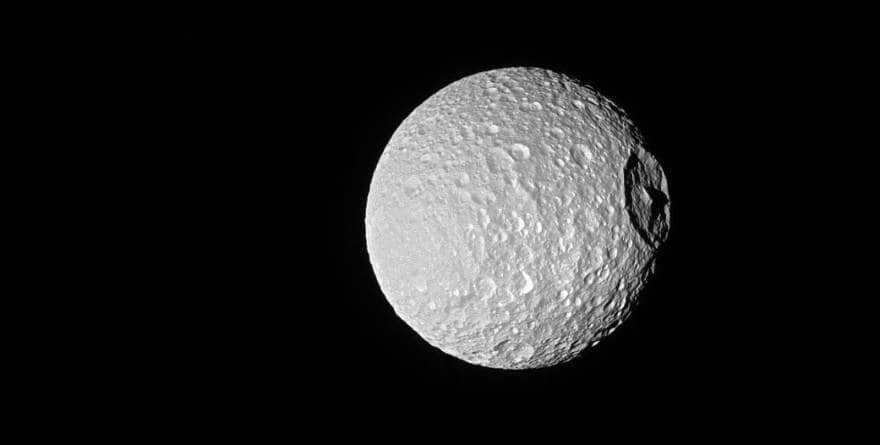
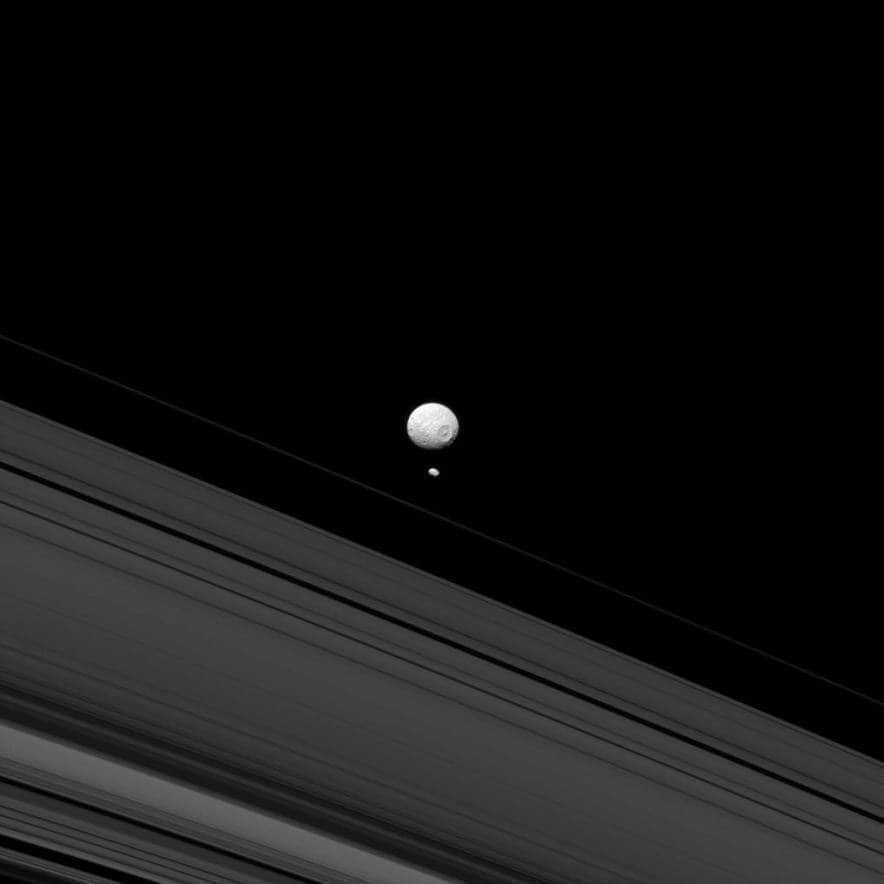
This image provides a glimpse into the contrasting features of the satellites Mimas and Pandora, as observed by the Cassini spacecraft. While Mimas boasts a spherical shape, Pandora, being smaller in size, lacks sufficient gravity to attain a similar form. This is evident in its elongated shape, which spans 81 kilometers. Additionally, Mimas showcases a unique characteristic – its north pole rises and rotates 28 degrees to the right. The image was captured on May 14, 2013, using Cassini’s narrow-angle camera with a blue filter. The distance between the spacecraft and the satellites was approximately 1.1 million kilometers, with a scale of 7 kilometers per pixel. It is worth noting that the Cassini program is a collaborative effort between the European Space Agency (ESA), NASA, and the Italian Space Agency, with the team operating from the Jet Propulsion Laboratory. Furthermore, the cameras on board the spacecraft were developed by the same team, and the extracted photos are processed in Boulder, Colorado.
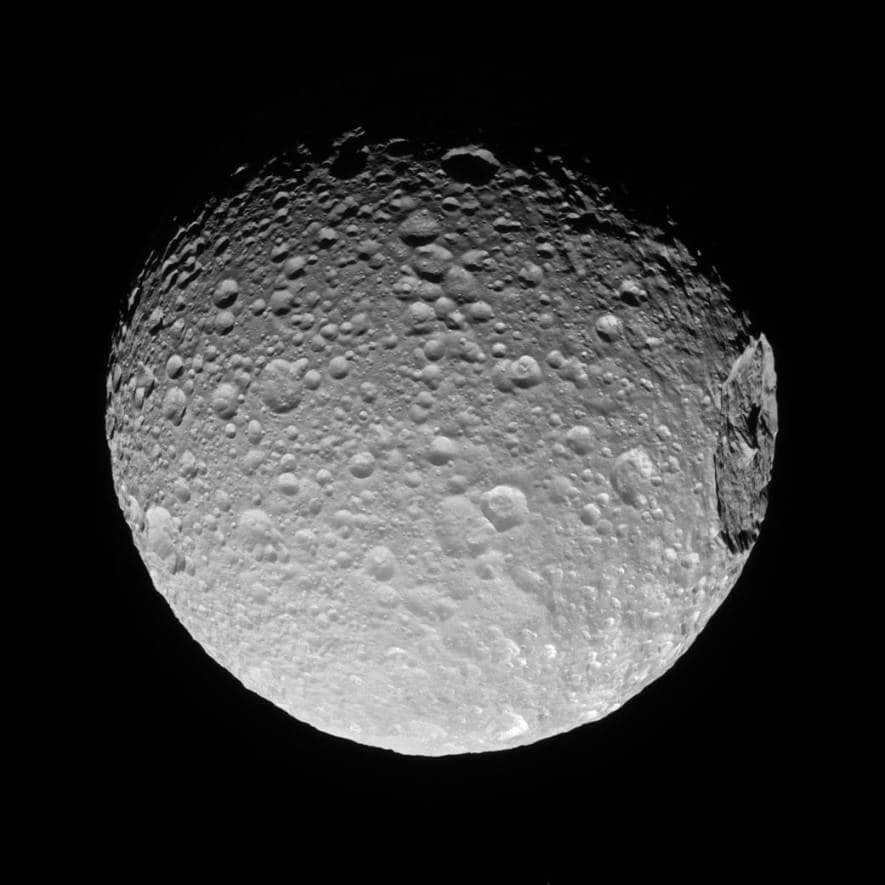
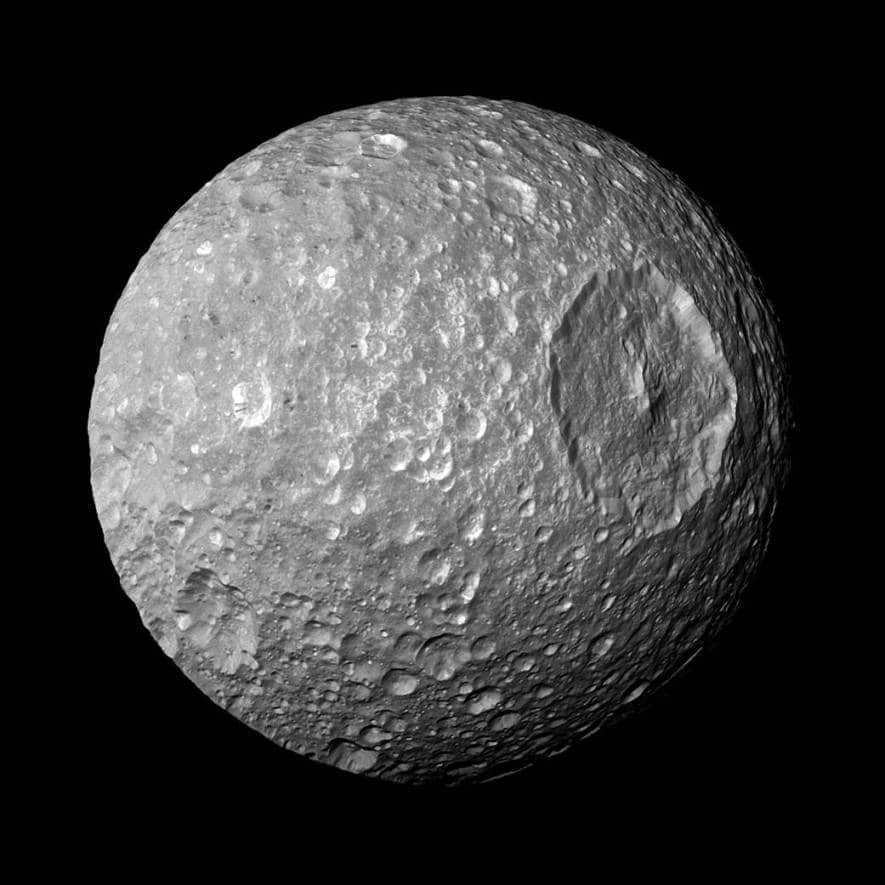
This image was captured during the closest approach to Mimas, Saturn’s satellite. The most prominent feature visible is the Herschel crater, which gives Mimas a resemblance to the Death Star. The diameter of the crater is approximately 130 km. On February 13, 2010, the spacecraft came within 9500 km of Mimas. The composite image is made up of 6 frames taken in visible light using a narrow-angle camera. Mimas has a diameter of 396 km. The observed area was located at 11 degrees south latitude and 158 degrees west longitude. It is worth noting that the northern region appears to be elevated. This particular view was obtained from a distance of 50000 km at an angle of 17 degrees. The scale of the image is 240 meters per pixel. The Cassini program is a collaborative effort between ESA, NASA, and the Italian Space Agency. The team responsible for the mission is based at LRD. Additionally, the two cameras on board the spacecraft were also built by this team. The captured photos are currently being processed in Boulder, Colorado.
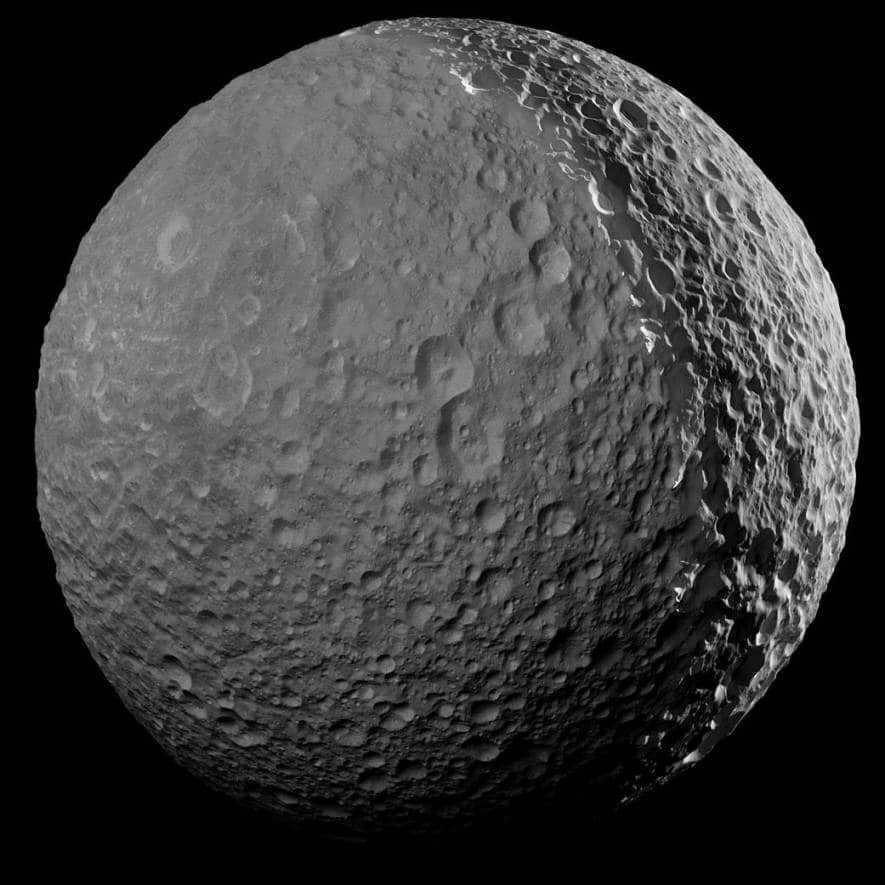

On April 5, 2005, Cassini positioned itself 2.1 million kilometers away from Mimas, capturing an incredible view of the moon’s Herschel crater at a 72-degree angle. This crater stretches a remarkable 130 km across. Additionally, the image reveals several arcs of the F-ring and a small portion of Atlas. Mimas, with its diameter of 397 km, is bathed in sunlight in this particular image, while Atlas extends for 32 km. The view was captured using a narrow-angle camera with visible light, with a scale of 13 km per pixel. The Cassini program is a collaborative effort between ESA, NASA, and the Italian Space Agency, with the team based at LRD. The two cameras aboard Cassini were also developed by this team, and the extracted photos are processed in Boulder, Colorado.
Not only the planets, but also the moons that revolve around them are the most breathtaking worlds in our cosmic vicinity.
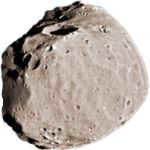
All planets in our solar system, except for two, possess natural satellites. The Moon, Earth’s satellite, is a desolate world with an intriguing history of ancient volcanoes and numerous impact craters. While it is the most well-known satellite, it may not be the most captivating. The outer planets of our solar system are each accompanied by a vast entourage of satellites, many of which originated from the same ice-rich material as their respective planets. Despite their distance from the Sun and lack of solar energy, these satellites exhibit a remarkable diversity, much like the planets themselves.
Mimas
Mimas is a moon of Saturn. It was discovered in 1789 by William Herschel. Mimas is named after a character in Greek mythology, who was the son of Gaia and Uranus. Mimas is the smallest and innermost moon of Saturn’s main rings. It has a diameter of about 396 kilometers and is shaped like a potato. Mimas is known for its large crater called Herschel, which is about 130 kilometers in diameter and gives the moon its distinctive appearance. Mimas also has a very low density, which suggests that it is made up mostly of water ice.
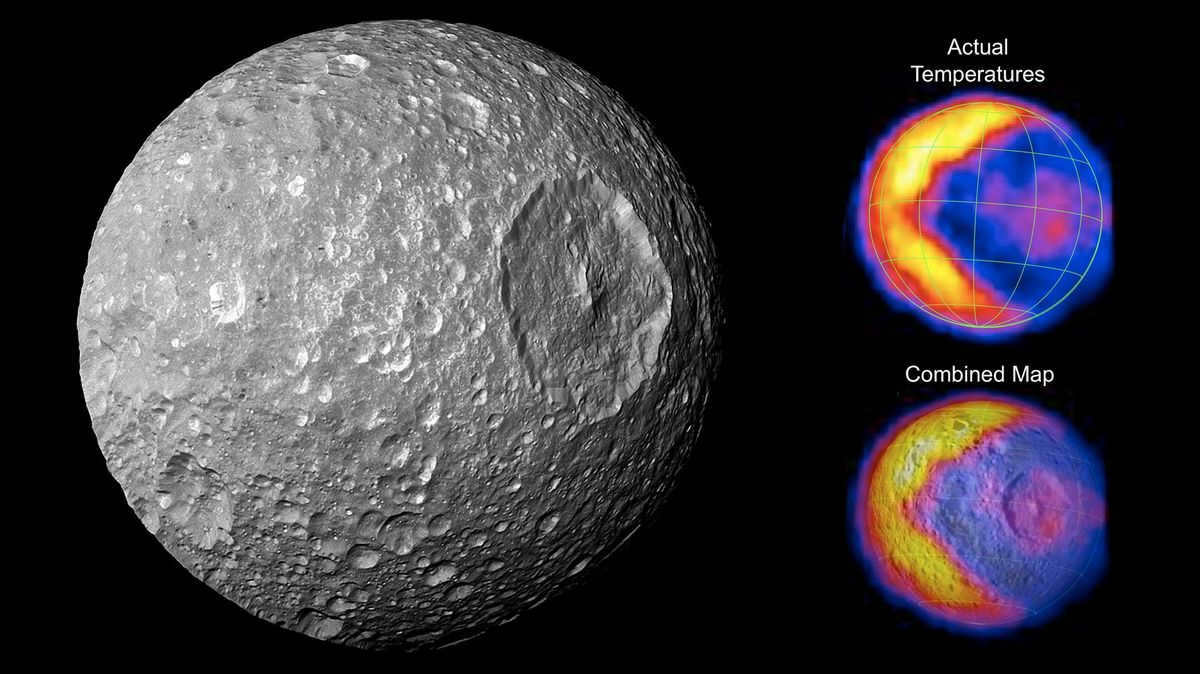
The right side of Mimas reveals the prominent Herschel crater, while the left side showcases infrared camera images captured by the Cassini spacecraft between 2009 and 2010. Interestingly, this image brought to mind the iconic character from the 1980s computer game – Pac-Man.
Source: NASA/JPL-Caltech/Space Science Institute
Mimas, the innermost moon of Saturn, is positioned between Enceladus and Pan and Atlas. With a diameter of only 396 kilometers, it holds the title of being the smallest known celestial body with a spherical shape resulting from its own gravitational pull. Unlike some larger celestial objects in the solar system, Mimas has successfully achieved a rounded shape. Astronomers attribute this to the moon’s low density of 1.15 g/cm³, slightly exceeding the density of water by approximately 15%.
Hyperion
Hyperion is a captivating and enthralling character. The story revolves around him and his extraordinary journey. He is a force of nature, a symbol of strength and power. His presence is felt throughout the narrative, and his actions have a profound impact on the other characters. Hyperion is a complex and multi-dimensional character, with a depth and complexity that is unparalleled. His story is one of triumph and tragedy, of love and loss. The reader is drawn into his world, and cannot help but be affected by his experiences. Hyperion is a truly remarkable character, and his story is one that will stay with the reader long after they have finished the book.
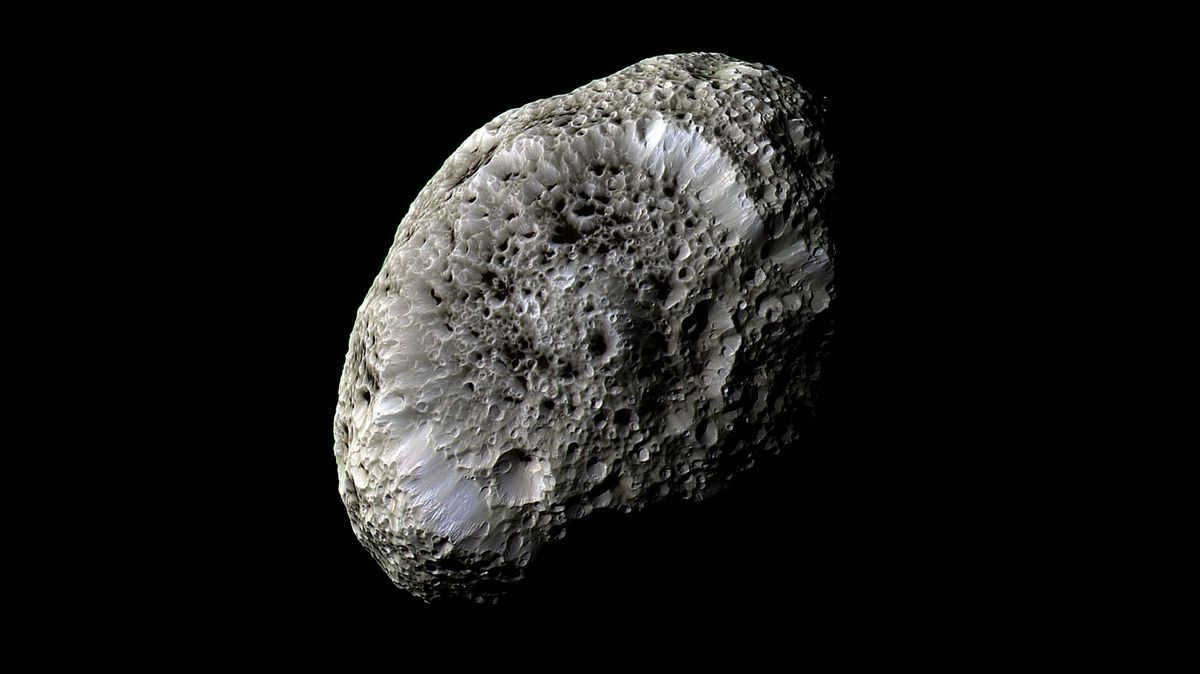
A unique image of Hyperion was captured by the Cassini spacecraft during its close encounter with the moon on September 26, 2005.
The photo, taken by NASA’s Jet Propulsion Laboratory-California Institute of Technology/Space Science Institute, showcases the moon’s distinct features.
Hyperion, a moon orbiting Saturn, stands out among the other celestial bodies in our solar system due to its peculiar appearance. Covered in numerous deep craters, it resembles a massive rotating sponge or coral, with its dark craters contrasting sharply against the brighter rock and ice formations that line their edges.
However, Hyperion is not just peculiar in one aspect: it currently holds the title for being the largest non-spherical moon in our solar system, as it orbits around Saturn in an extremely elongated elliptical path. Due to its irregular potato-like shape, the moon experiences what scientists refer to as “chaotic rotation,” making it difficult to accurately predict its positioning in space.
Analysis of the data collected by NASA’s Cassini spacecraft during its missions over Hyperion in 2005 and 2006 indicates that the moon is likely made up of approximately 60 percent regular water ice, with a small mixture of rocks and metals. Furthermore, it is believed that a significant portion of its internal volume (possibly up to 40 percent or more) consists of empty spaces.
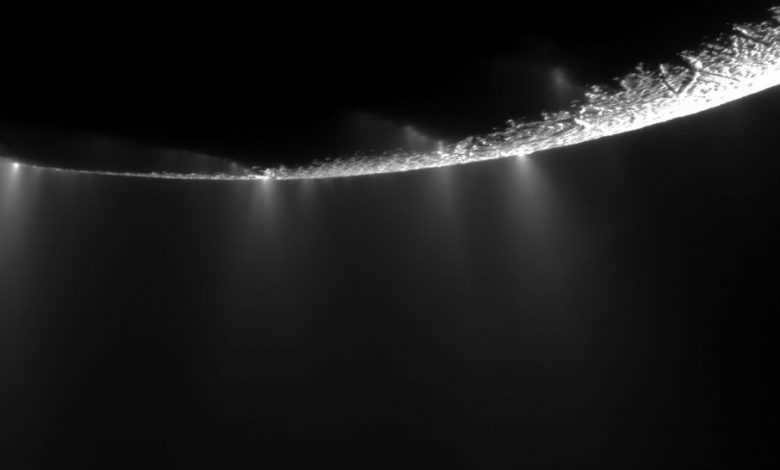
Cracks at the south pole of Saturn’s moon Enceladus are releasing jets of water vapor.
IMAGE: NASA/JPL/Space Science Institute
Ever since NASA’s Cassini spacecraft arrived at Saturn in 2004, Enceladus, the small inner moon with rings, has become one of the most extensively studied and talked about celestial bodies in our solar system. Its newfound popularity is due to the discovery of large plumes of water vapor erupting into space from cracks in its southern hemisphere, indicating the presence of liquid water just beneath the moon’s icy surface.
Enceladus’ unusual behavior was observed even prior to Cassini’s arrival, thanks to previous images that revealed the moon’s exceptionally bright surface and craters resembling snow-covered terrain. However, when Cassini passed through one of the plumes, it provided a remarkable confirmation that Enceladus is indeed a dynamic world.
Unlike its neighboring satellites in the Saturn system, Enceladus should have frozen solid billions of years ago. Scientists are still uncertain about the energy source behind this incredibly vigorous volcanic activity exhibited by such a small moon. In 2010, researchers discovered that orbital libration might account for this heating phenomenon. Consequently, Enceladus has become a prime target in the search for extraterrestrial life within our solar system.
While the majority of the water vapor returns, a portion manages to evade the relatively feeble gravitational pull and enters into a stable orbit around Saturn, resulting in the creation of the “E” ring.
Callisto
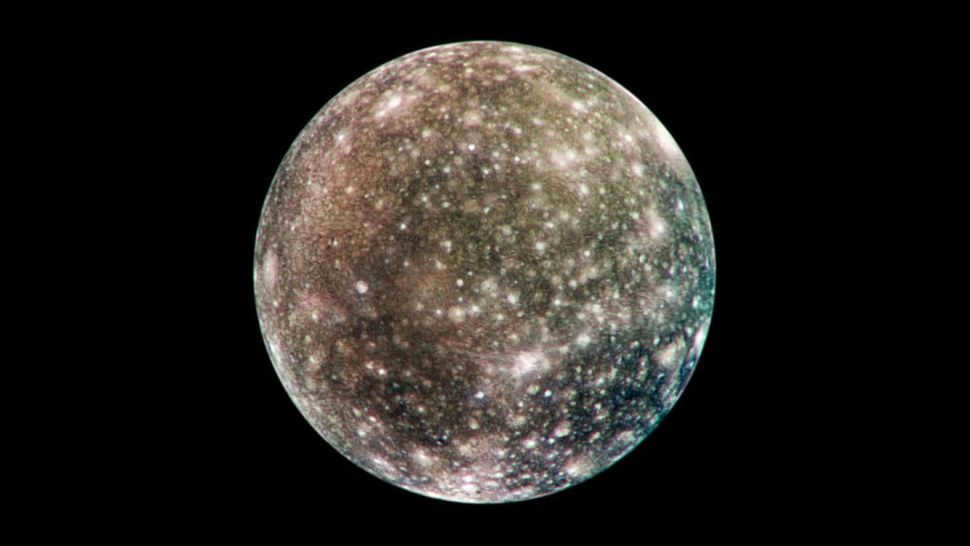
NASA’s automated Galileo spacecraft captured this image of Callisto in 2001.
As the most remote of Jupiter’s Galilean moons, Callisto is the third largest moon in the entire solar system, coming in just after Mercury, and in Jupiter’s moon system, it is second only to Ganymede. Callisto proudly holds the title for the most heavily cratered object in the solar system, with its dark surface being filled with countless craters, some of which are so deep that they contain ice.
Jupiter’s larger moons that are directly in the “line of sight” receive more impacts than Callisto, but the nearby moons, affected by strong tidal forces, have undergone geological processes that have erased a significant portion of their ancient craters. Callisto’s surface, on the other hand, has remained virtually unaltered for over 4.5 billion years.
In addition, it has been discovered by scientists that a subsurface ocean is formed at a depth of 100-150 km. beneath the surface of the satellite. Measurements conducted on the spacecraft “Galileo” have revealed that the depth of this subsurface layer of liquid water is more than 100 km. The existence of an ocean within the depths of Callisto makes it a potential location for extraterrestrial life. However, the conditions for the development and sustainability of life on Callisto are not as favorable as those on Europa.
Io
Rephrase the text, making it unique, using the English language and preserving the HTML markup:
Io
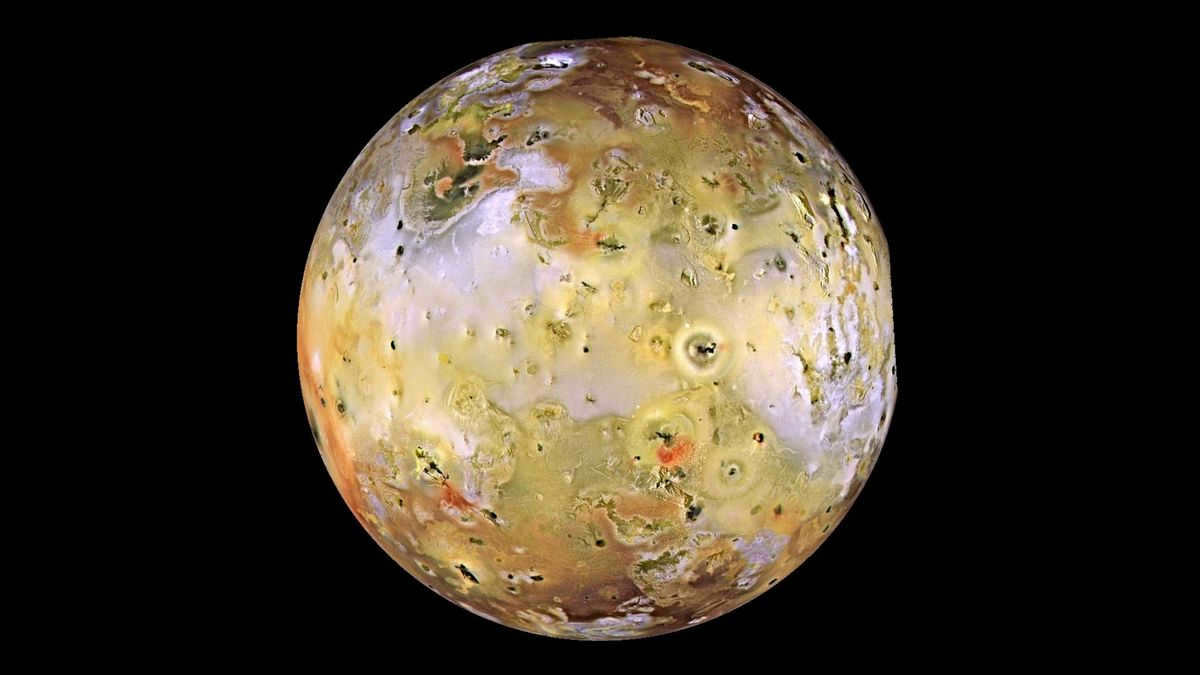
Io, image obtained by NASA’s Galileo spacecraft.
Photo: NASA/JPL/University of Arizona
Io is the nearest of Jupiter’s four Galilean moons. While the other three appear visually calm, resembling frozen worlds of rock and ice, Io’s terrain is a hazardous blend of yellows, reds, and browns. It is filled with strange and constantly shifting mineral formations caused by volcanic emissions of sulfur and sulfur dioxide.
Io is considered the most geologically active object in the solar system, boasting over 400 active volcanoes that release sulfur emissions reaching heights of up to 500 kilometers. Unlike many moons orbiting gas giants, Io is primarily composed of silicates and iron, similar to the terrestrial planets, rather than ice. In terms of size, Io is slightly larger than Earth’s own moon. Scientists hypothesize that the main cause of the satellite’s volcanic activity is tidal heating of its interior, a result of its orbital resonances with Europa and Ganymede.
When scientists first saw the images of Io taken by Voyager-1, they were expecting to see a lot of impact craters, which would have indicated the age of the surface. However, they were surprised to find that there were hardly any impact craters on the moon. Instead, they observed smooth plains with tall mountains, lava flows, and various pits. Unlike other celestial bodies, Io is covered in colorful substances, mainly made up of sulfur compounds and modifications. The scarcity of impact craters suggests that Io’s surface, much like Earth’s, is relatively young in geological terms.
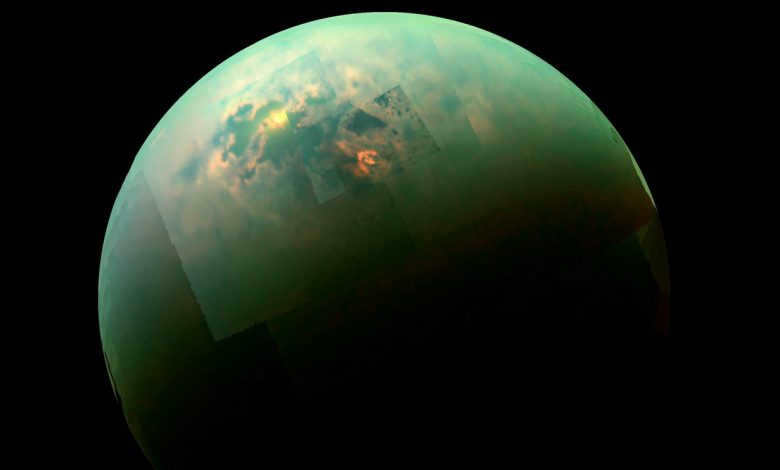
A stunning image of Titan, the largest moon of Saturn, has captured the sun’s rays reflecting off its northern polar seas. This near-infrared color photo, taken by the Cassini spacecraft, showcases the unique features of Titan, which is the second largest moon in our solar system and the only other celestial body, apart from Earth, where liquid has been confirmed to exist on the surface. Titan also boasts a dense atmosphere, making it a truly remarkable satellite. Through the use of infrared and radar instruments, Cassini was able to penetrate Titan’s opaque atmosphere and reveal a landscape of rivers and lakes that is unlike anything found elsewhere in our solar system.
Source: NASA
The atmosphere of the satellite is mostly composed of nitrogen, accounting for 98% of its composition. Unlike other satellites in the solar system, the surface of Titan cannot be directly observed in the optical range due to the presence of a small amount of methane in its atmosphere.
An interesting fact is that the conditions on Titan are ideal for methane to undergo changes in its physical state, transitioning between gaseous, liquid, and solid forms. This creates a methane cycle similar to Earth’s water cycle, which plays a crucial role in shaping the climate on our planet. In colder temperatures, methane freezes and forms frost or ice on the surface. At moderate temperatures, it condenses and falls as rain, causing erosion and altering the landscape. In warmer regions, methane evaporates and returns to the atmosphere.





